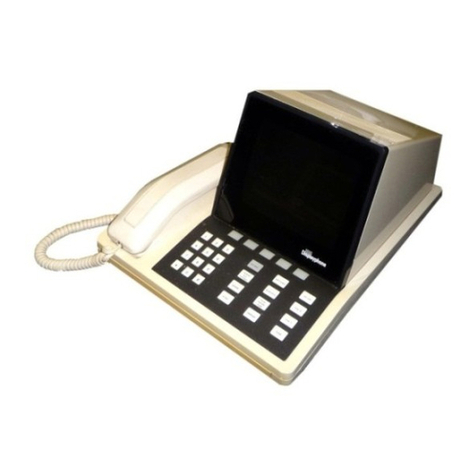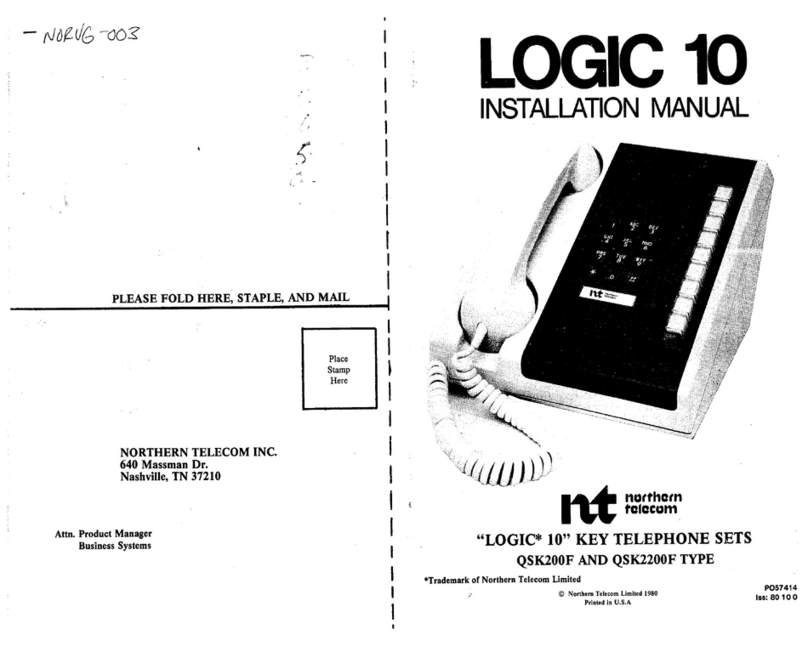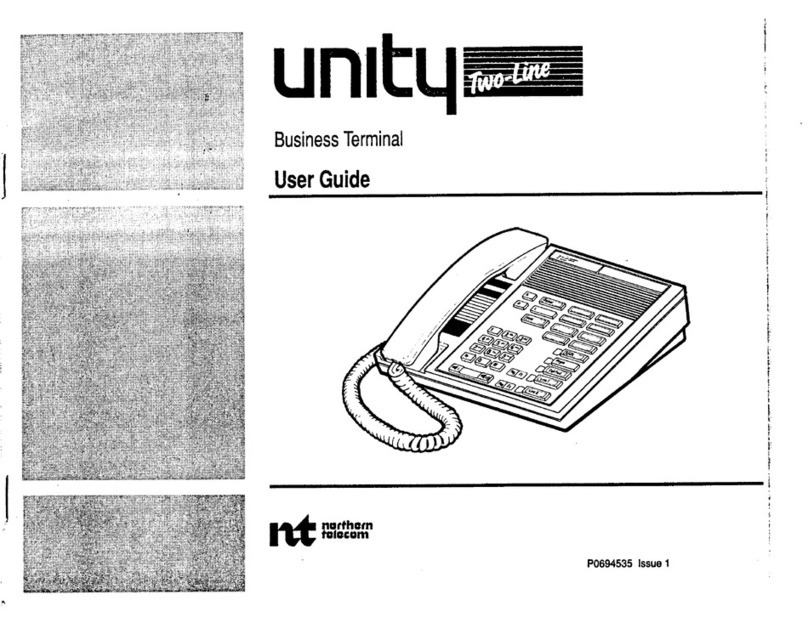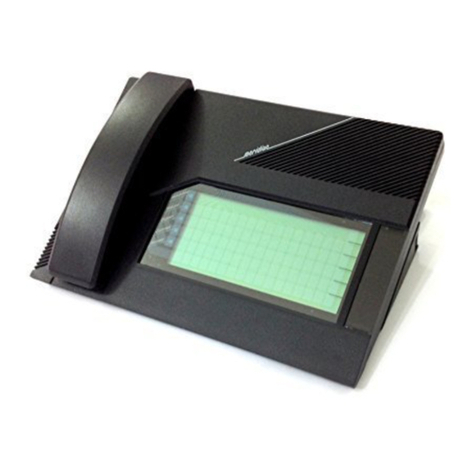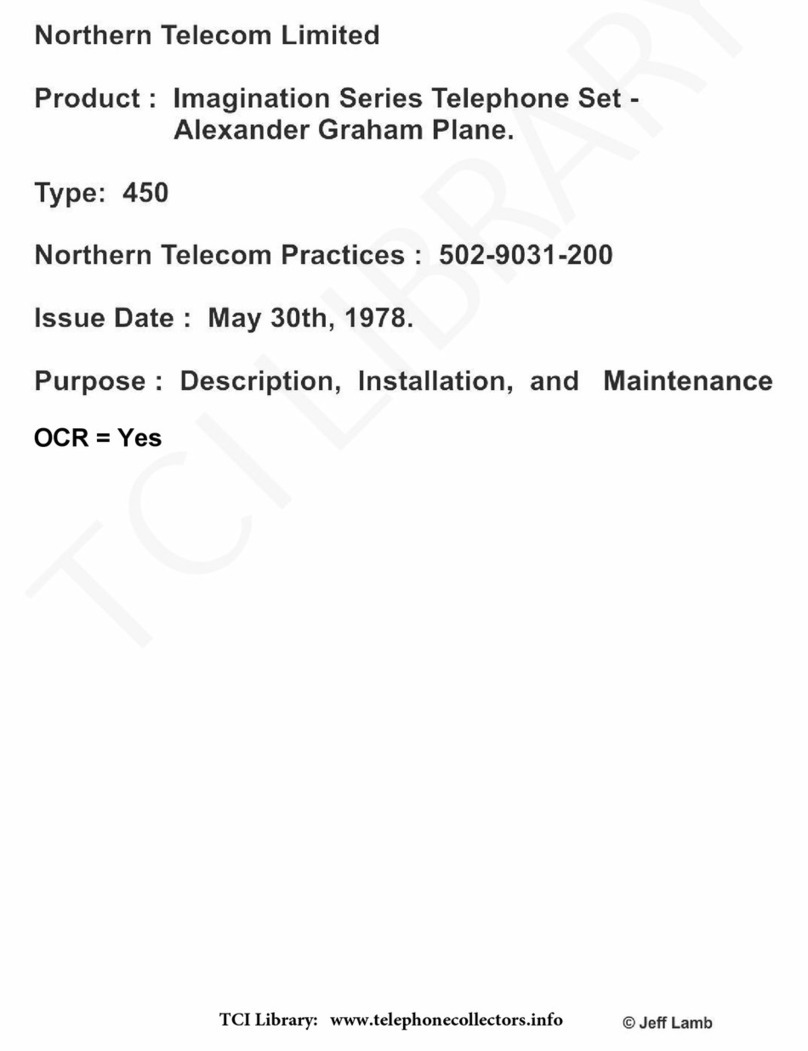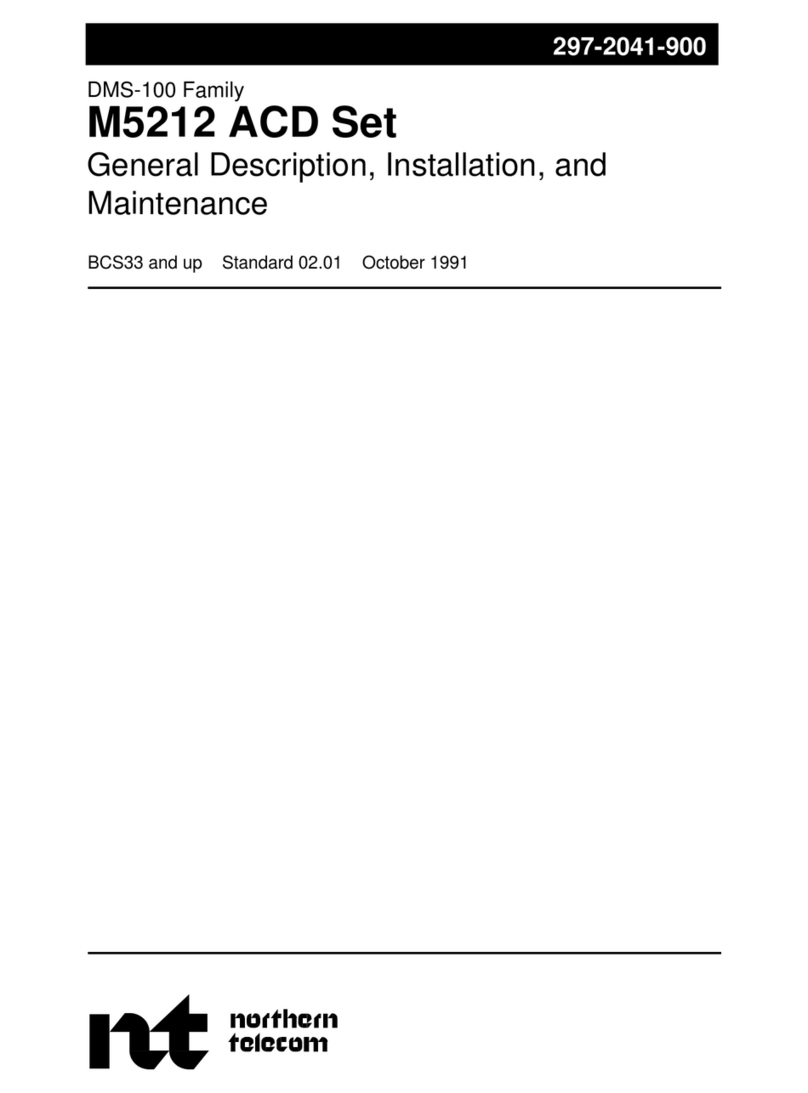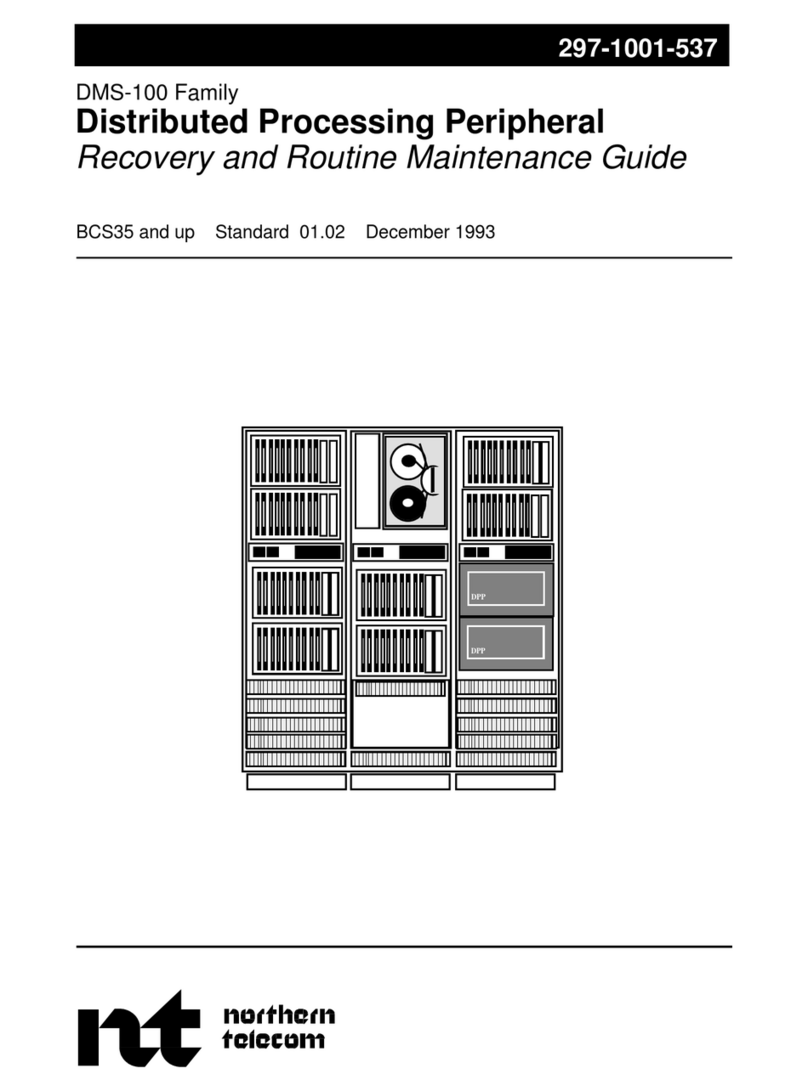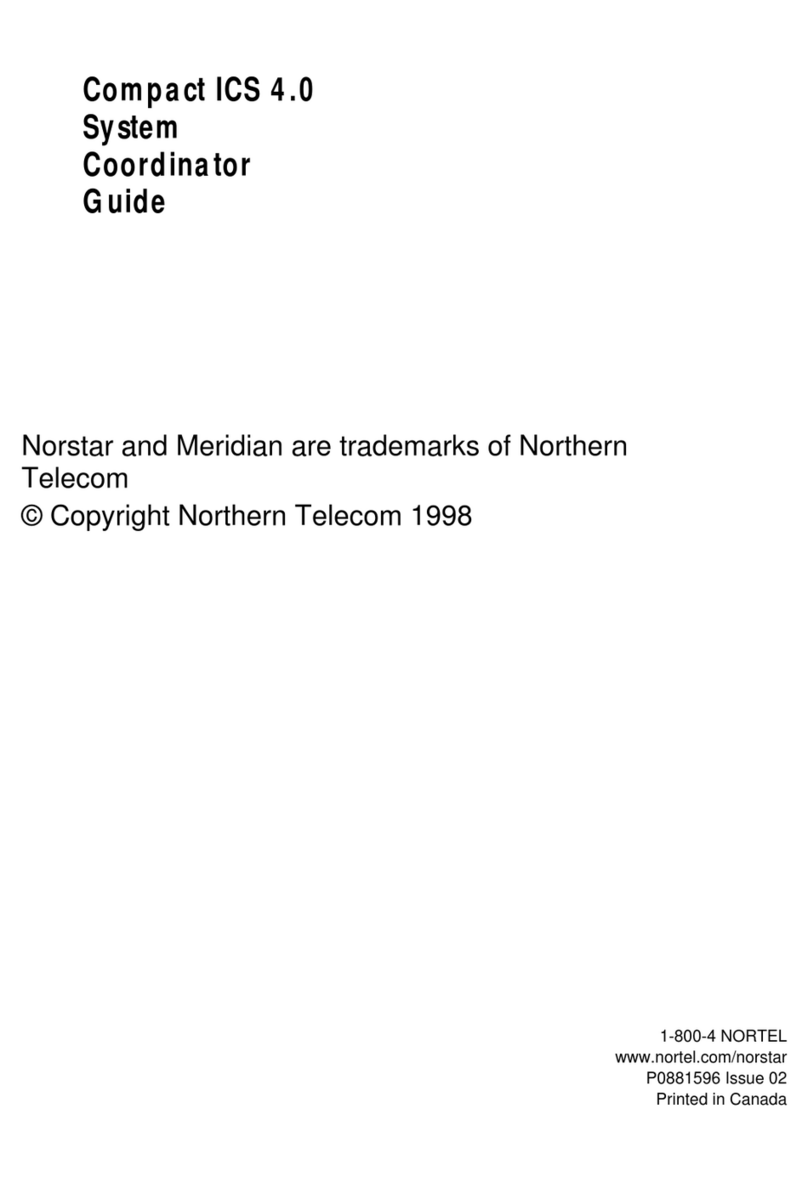
Preparing to install the M5317TX 9
M5317TX and CustomNet Installation Guide
entering an asterisk (•) in the configuration menu. A packet-switched
TEI is static and is enabled by entering an actual TEI value (1-63).
Service Profile Identifier (SPID)
The SPID is a unique number which the switch uses to identify the
location and features on the M5317TX. The SPID can be up to 20
digits long-the standard for DMS-100 switches is a 14 digit number,
which is structured as follows:
•3 digit area code
•7 digit directory number (same as the Prime Directory Number)
•2 digit optional suffix (00-99)
•2 digit terminal ID (00-62) when using NI-1 signalling
(not required on pre-NI-1 DMS lines, i.e. PVC0 or PVC1)
For Meridian 1, the SPID is a 1-9 digit number, usually a four-digit
number identical to the Prime Directory Number (PDN).
In ETSI mode, a SPID is not required-leave as a blank when
following the installation instructions in chapters 3 or 4.
Directory numbers(DN)
The Voice directory number is the number someone can dial to reach your
M5317TX for spoken conversation. In addition to your Prime Directory
Number (PDN), your set may have other directory numbers (including
some which are shared with other sets). The X.25 DN is the number dialed
to establish a packet-switched data link with your set, while the Data DN is
the number used to establish a circuit-switched data call.
Directory numbers can be up to 12 digits long.
When configuring 1B + D service, you must enter a data DN (even though
you are not entering a data TEI or SPID).
Call handling mode
The M5317TX can be configured as a CACH (Call Appearance Call
Handling) set when using NI-1 signalling. When set to CACH mode,
the switch treats lines on the M5317TX as call appearances. When set
to NoCACH, the switch treats the lines as directory numbers.



